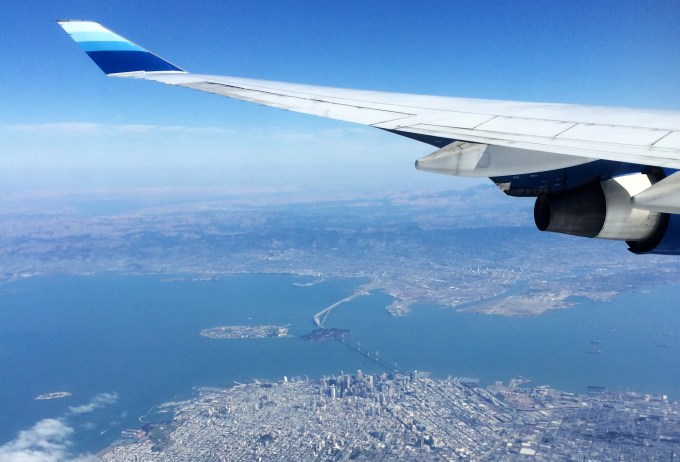
For years now, most of us have been quietly not turning off our phones and devices at landing and take off, and merely putting the screens to sleep and stuffing them in seat pockets instead. Now, we’ll be able to do that officially and more, according to the FAA. The American government organization overseeing air travel today announced that travelers won’t face regulations that are quite as strict when it comes to electronics on planes.
Don’t start celebrating just yet – this doesn’t mean you can continue playing Candy Crush while waiting for your massive, heavy hunk of metal to defy physics and launch itself into the air as of this very moment. The changes will differ depending on each airline, the FAA says, since there are differences between types of planes and how things are run at each different carrier, but the FAA anticipates that most will allow passengers to use their gadgets “in airplane mode, gate-to-gate, by the end of the year.”
Passengers can use e-book readers, play games and watch videos on devices, and can hold gadgets during both take-off and landing, or else stow them in the seatback pocket. These gadgets need to be in Airplane Mode or have cell service turned off during both landing and taxi/take-off, but you can actually use Wi-Fi during your flight and continue to use Bluetooth accessories connected to your phone.
There are still some things the FAA says travelers need to be aware of regarding these rules, to make sure they’re still in compliance with guidelines. Here’s a full list of those points flagged by the regulatory organization:
1. Make safety your first priority.
2. Changes to PED policies will not happen immediately and will vary by airline. Check with your airline to see if and when you can use your PED.
3. Current PED policies remain in effect until an airline completes a safety assessment, gets FAA approval, and changes its PED policy.
4. Cell phones may not be used for voice communications.
5. Devices must be used in airplane mode or with the cellular connection disabled. You may use the WiFi connection on your device if the plane has an installed WiFi system and the airline allows its use. You can also continue to use short-range Bluetooth accessories, like wireless keyboards.
6. Properly stow heavier devices under seats or in the overhead bins during takeoff and landing. These items could impede evacuation of an aircraft or may injure you or someone else in the event of turbulence or an accident.
7. During the safety briefing, put down electronic devices, books and newspapers and listen to the crewmember’s instructions.
8. It only takes a few minutes to secure items according to the crew’s instructions during takeoff and landing.
9. In some instances of low visibility – about one percent of flights – some landing systems may not be proved PED tolerant, so you may be asked to turn off your device.
10. Always follow crew instructions and immediately turn off your device if asked.
Earlier this year, the FAA seemed ready to relax the rules around personal electronics use in-flight, but they quickly noted that this didn’t mean we’d see blanket bans lifted immediately. Now, the FAA is taking pains to roll this out more quickly, and is “streamlining” approval of the new rules via clear instructions and guidelines for airlines about implementation of device use. Delta has announced that it’s the first to submit its plan to comply with the new regulations, and that it will do so by November 1, it hopes.
With any luck, some passengers might be able to watch Home Alone 2 on their new iPad Air while winging their way home to enjoy a family Christmas dinner. It’s about time.
Category: Dario Franchitti Nothing Was The Same NFL Network Espn College Football michael jackson
No comments:
Post a Comment
Note: Only a member of this blog may post a comment.